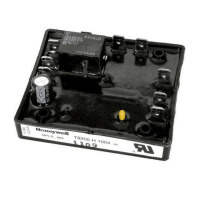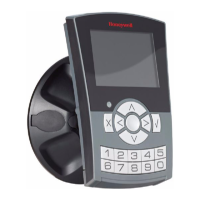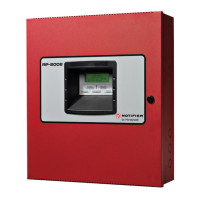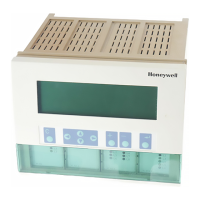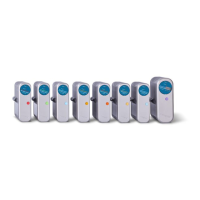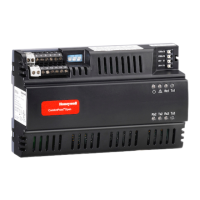NORMAL OPERATION
Touchpoint Pro
Pt. No. 2400M2566_1_EN 37 Operating Manual
5.13.2 SD Card Management
The SD card should not normally be removed from the controller. If it is necessary to remove the SD card the controller will
continue to cache event and trend data until the SD card is re-inserted.
The following points should be noted:
• The controller will not accept an SD card containing data for another TPPR system.
• Take care to re-insert the correct SD card, or a permanent replacement. The controller will flush cached data to the
SD card when a card is re-inserted. It a different SD card is fitted data will become fragmented and may not be
useable.
• Similarly, when an SD card has been replaced, the original SD card should not be re-fitted for the same reason.
• The TPPR will continue to operate normally with no SD card fitted. The controller can cache several hours of events
in internal memory. When the cache is full the oldest data is overwritten and cannot be recovered.
• The TPPR will continue to operate normally with a full SD Card. When the card is full the oldest data will be
overwritten. The overwritten event and trend data cannot be recovered.
• The TPPR will warn when the SD card is 80% full, when the card is full, and when previous data is being overwritten
5.13.3 SD Capacity Reporting
The TPPR will warn when the SD card is 80% full and warn again when the card is full, and will warn yet again when
previous data is being overwritten.
The TPPR will continue to operate normally with a full SD Card but overwritten event and trend data will be irrecoverable.
5.13.4 How to Check the SD Card Capacity
From the System Status screen navigation bar, select Tool Box>SD Card to show the card’s capacity and unused space.
5.13.5 Ejecting the SD Card
Event and trend data is held in system memory and saved to the SD card several times per minute.
To ensure that chronology is correctly maintained, and to minimise loss of event history data during updates, always use the
‘Eject SD Card’ command before removing the SD Card from the TPPR, and subsequently reinsert the same or a
permanent replacement card in the system as soon as possible. When the command ‘Eject SD Card’ is used, the data
currently held in system memory is immediately downloaded to the SD Card.
5.13.6 Replacing an SD Card
Before replacing an SD card, event and trend data should be exported to report files, using the Touchscreen or the
Webserver as the source files cannot be read by commercial office software. See Ch.8.12 Event Reports for further
information.
The new card requires no special preparation but should be unlocked and formatted. Prior to installing you may want to use
a card reader to copy the TPPR Configuration directory and recent backup files from the old SD card to the new one.
Note: SD Cards must be formatted to FAT32 only; other file systems are not supported and will not work.
Note: Once an SD card has been replaced the original SD card should not be reinserted in the TPPR. This is because some
event and trend data will be saved to each card and the data will become fragmented.
5.14 Accessing Help
From the System Status screen navigation bar, select Tool Box, then Help. This help screen will show the date of the last
configuration change, configuration version, previous user, about TPPR and the service contact options.
The configuration version increments every time that parameters are written to the TPPR, including during calibration. The
configuration version can also be used as a check against unauthorised modification of the system.
• Select About to view software and firmware versions.
• Select Service Contact for details of how to access technical support.
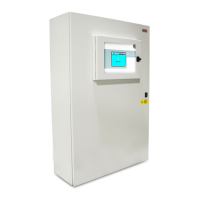
